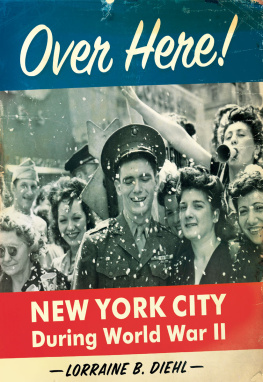About the Authors
Jerry Clark retired as a special agent with the Federal Bureau of Investigation in 2011 after twenty-seven years in law enforcement, including careers as a special agent with the Drug Enforcement Administration and the Naval Criminal Investigative Service. He received a PhD in public service leadership from Capella University, an MA in forensic psychology from the City University of New York John Jay College of Criminal Justice, and a BA in psychology from Edinboro University of Pennsylvania. Clark is an assistant professor of criminal justice at Gannon University in Erie, Pennsylvania, where he is also co-owner of Clark & Wick Investigations LLC. He lives with his wife and two children in Erie.
Ed Palattella joined the Erie Times-News, in Erie, Pennsylvania, in 1990. He has won a number of awards, including for his investigative work and coverage of crime. He arrived in Erie after reporting for the Point Reyes Light in Marin County, California. Palattella received an MA in journalism from Stanford University and a BA in English literature from Washington University in St. Louis. He lives with his wife and two children in Erie.
Clark and Palattella are the coauthors of Pizza Bomber: The Untold Story of Americas Most Shocking Bank Robbery, and A History of Heists: Bank Robbery in America. As a special agent with the FBI, Clark led the investigation of the Pizza Bomber case in Erie, Pennsylvania, which was FBI Major Case 203. Palattella covered the case as a reporter for the Erie Times-News. He continued to hear regularly, by phone, from the incarcerated Marjorie Diehl-Armstrong until shortly before her death in April 2017.
Acknowledgments
T he travails of Marjorie Diehl-Armstrong have become almost legendary in Erie, Pennsylvania, especially at the two places where she stood trial: the Erie County Courthouse and the United States District Courthouse in Erie. The records of those and many other cases that involved Diehl-Armstrong are voluminous, and we thank all those who helped us obtain and review the files and documents. They include Susan Parmeter, Debbie Mayo, and Jennifer Dash at the federal clerks office; and Bob Catalde, Ken Gamble, Tito Bongiorno, Kelly Malone, Karla Jeffery, Aubrea Haynes, and Paula Miller at the Erie County Courthouse. A special thanks also to Max Peaster, the law librarian at the Erie County Courthouse; and Bob Sparks, of the Nash Library at Gannon University in Erie. The Federal Bureau of Investigation provided assistance tracking down records as well. The views expressed in this book are those of the authors alone, however, and do not necessarily reflect those of the FBI. We are grateful for the work of copy editor Gary Hamel and, once again, for the work of our editor at Rowman & Littlefield, Kathryn Knigge, and for the continued guidance of our literary agent, John Talbot.
Jerry Clark: While researching this book I had numerous hours of reflection on my law enforcement career in general and my dealings with Marjorie Diehl-Armstrong in particular. I was reminded of the dedication and persistence of the outstanding agents, officers, and attorneys with whom I was privileged to work throughout my dealings with Diehl-Armstrong and the Pizza Bomber investigation. I especially want to thank my partner in the case, Jason Wick, now a retired special agent with the Bureau of Alcohol, Tobacco, Firearms, and Explosives. I also wish to express my sincere gratitude to all those who assisted in the investigation, including employees with the FBI, Pennsylvania State Police, Erie Bureau of Police, and the Erie Division of the United States Attorneys Office for the Western District of Pennsylvania, specifically Assistant United States Attorney Marshall Piccinini. I particularly want to express my deepest appreciation to Dawn Parnell and Rebecca Hart from the FBIs Erie Resident Agency for their invaluable work on the case and for their enduring friendship. I am grateful for the insights provided by my good friend the late Dennis Drotar, PhD, who was a professor in the division of behavioral medicine and clinical psychology at Cincinnati Childrens Hospital Medical Center. Lastly, I would like to thank from the bottom of my heart my wife, Danielle, and children, Michael and Isabelle, for their unconditional and unwavering love, support, and patience.
Ed Palattella: The morgue of my employer, the Erie Times-News, was an invaluable resource in researching this book. I thank the papers executive editor, Doug Oathout, and another top editor, Pat Howard, for their continuing interest and support. In reading all the past newspaper stories on Marjorie Diehl-Armstrong, I was reminded again of the great talents of my colleagues and friends at the Erie Times-News. They include Lisa Thompson, Tim Hahn, and Kevin Flowers, each of whom wrote about Diehl-Armstrongs later cases, including the Pizza Bomber case, with insight and verve. I am also fortunate to continue to enjoy friendships with now-retired Erie Times-News reporters John Guerriero and Jim Thompson, who covered Diehl-Armstrongs first homicide trial, in 1988, and whose articles proved so helpful for this book. And thanks, as always, to my wife, Chris, and our children, Henry and Nina, for still listening, with patience and good humor, to all my stories.
Afterword
I n the end, Marjorie Diehl-Armstrong was left without one of the things that she craved the most: money. Harold Diehl disinherited his only child.
He all but wrote Diehl-Armstrong out of his will in 2005, nine years before his death. Diehl-Armstrong learned of her disinheritance while her father was still alive and suffering from dementia. In 2010, while awaiting trial in the Pizza Bomber case, she petitioned a probate judge in Erie County to declare her father mentally incapacitated and unable to manage his financial affairs. The litigation revealed that Harold Diehls assets, once estimated to be $1.8 million, had dropped to $185,000 by mid-2010, mainly because he had given so much of his fortune away to his friends and neighborsthose good-hearted beneficiaries who he said truly cared for him but whom Diehl-Armstrong called vultures. The litigation also revealed that Diehl had bequeathed Diehl-Armstrong $100,000 in a will in 2000, but wrote a new will in 2005 that left her only $2,000; he left the bulk of his estate to his friends. Diehl-Armstrong claimed another will, which she said was drafted in 2008, was the most accurate: that will named her the sole beneficiary of her fathers estate. But a judge ruled the 2008 document was fraudulent. And the judge ruled the 2005 willand its $2,000 legacy to Diehl-Armstrongwas valid.
The disinheritance was the result of the deteriorating relationship between Harold Diehl and his daughter. He changed the 2000 will after Diehl-Armstrong tried to get him removed as the administrator of his wifes estate that same yearthe attempt in which Diehl-Armstrong, in court records, called her father an abusive alcoholic who all but killed her mother. Harold Diehls anger at his only child, his estate lawyer said, went beyond the fact that she had pleaded guilty but mentally ill in one homicide and had been indicted in the Pizza Bomber case. The anger, the lawyer said, was rooted in Diehl-Armstrongs unwarranted vitriol toward her father and the false claims she made against him in the fight over the administration of Agnes Diehls estate.
It is an unusual circumstance where neighbors are favored over a child, the lawyer said, but this is an unusual fact pattern.
Harold Diehl, who had been Marjorie Diehl-Armstrongs closest living relative, died on January 8, 2014, at the Pennsylvania Soldiers and Sailors Home in Erie. He was ninety-five years old and died in debt. He had $118,000 in his estate, but it all went to pay medical bills. Diehl-Armstrong did not even get the $2,000 he promised her.











